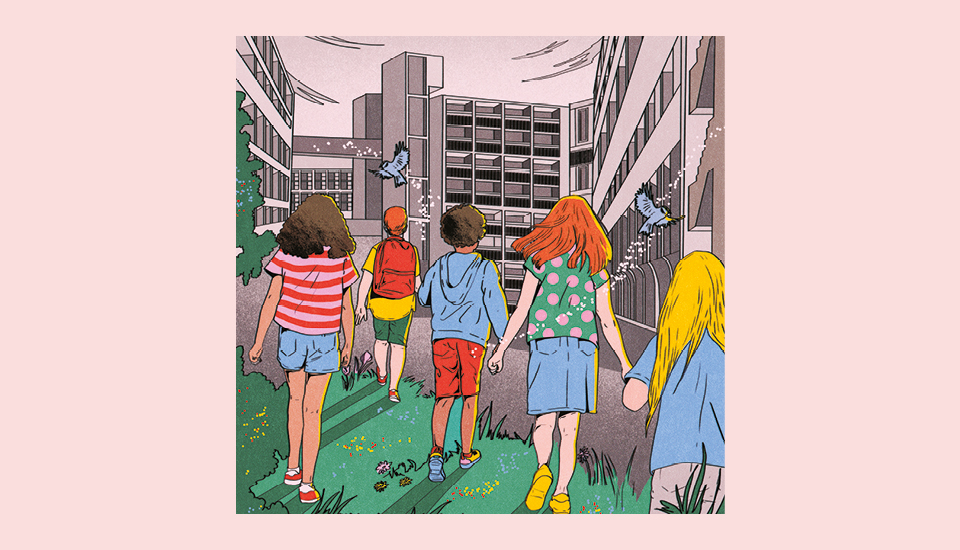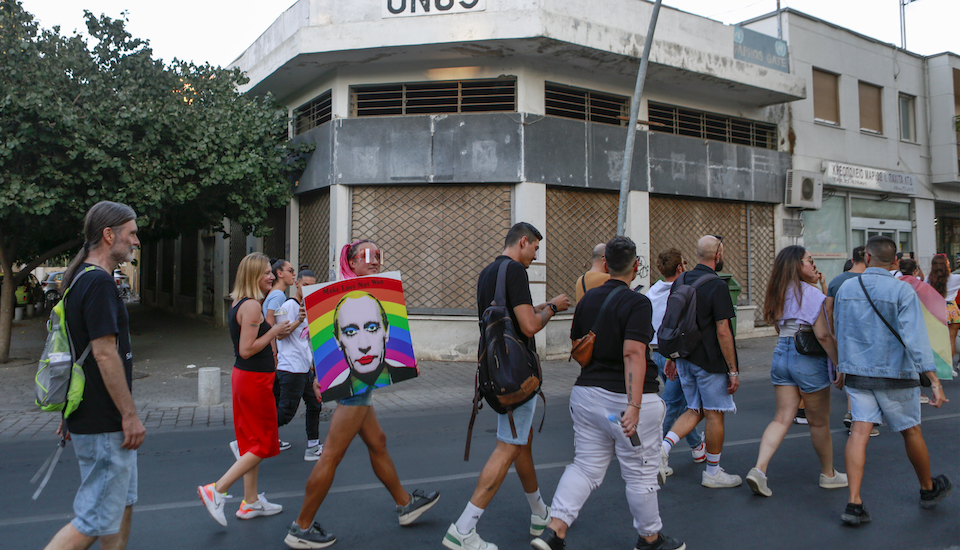Following my last introductory blog post, over the next three or four I will explore a set of ideas by looking at how they might apply to us as individuals, to organisational culture and change, to policy, place and ideology. In each case I will point out some similarities with, and differences from, other frameworks, before seeking to persuade you that my preferred framework has a good enough fit to apply to all levels.
"Human beings like patterns. Our minds work by seeing them, whether or not they are really there" - Cass Sunstein, How Change Works (2019)
“Everything must be made as simple as possible. But not simpler” - Albert Einstein
Human beings relate to the world through pattern recognition. It is one of the core elements of our cognitive processes, vital for example in our capacity to see perspective. Anyone who has brought up a child has watched them start to recognise objects, learn basic words to describe them, then start to classify, perhaps by colour or size, before starting to articulate concepts like cause, motive and fairness.
The Swiss developmental psychologist Jean Piaget had an unusual childhood including writing research papers on molluscs in his early teens and developing a strong but false memory of being kidnapped based on an erroneous claim made by his nanny. But Piaget’s later work focused on what all children have in common as they develop cognitive apparatus to perceive the world. He vividly captured key stages of development. These include ‘object permanence’: when a young child first becomes aware, for example, that a toy train, which disappears behind a screen for a few seconds on each circuit of a track, hasn’t gone forever. Or the principle of ‘conservation’, demonstrated by a child understanding that the amount of liquid poured directly from a short fat container to a tall thin one remains the same.
But not all forms of pattern recognition are inevitable stages of development. In this series of blog posts I aim to help you see that similar patterns recur in everything, from the ways we work together to the motivations of each of us as individuals, to the resilience of whole nations. In each of the areas I explore, the structures I describe have been recognised before. Too often missed is the way in which these dynamics repeat at different levels.
Big social systems have their own characteristics but, ultimately, they comprise smaller systems, which are in turn the outcome of human behaviours and choices. By seeing ways of thinking and acting repeat at different levels of social action we can spot useful similarities in the apparently very different challenges we face.
Margaret Thatcher famously argued that Britain’s finances should be managed on the same principles used by her father as owner of a corner shop in Grantham. This is bad economics, but there is something powerful about being able to connect our own day-to-day lives and motivations to the challenges facing organisations and decision-makers; it can help close the gap between the sense of agency most of us feel about our own lives and the sense of alienation and distrust we feel toward the institutions that govern us.
By being more aware of our own conflicted nature might it become easier for us to see why organisational strategies are so hard to get right and why social policies rarely achieve their stated aims?
The theory I will outline in coming weeks draws on many existing frameworks, but particularly that of the twentieth century British anthropologist Mary Douglas and her followers. But while honouring their insights, I have decided to give my version of the ideas a new name: ‘coordination theory’. This is because the ways of thinking and acting I am going to describe are, amongst other things, methods for people to work together to achieve goals. Also, I will argue that the best method to address many problems is to try to get the different motivations and perspectives to align in what I call ‘fully engaged’ solutions.
Why did you do what you did today?
The mention of theory may imply that I am going to get very abstract. My aim is to help you recognise the four ‘forms of coordination’ in a very concrete way; by thinking about your own daily routine.
Every day each one of us makes thousands of decisions. The vast majority are tacit, the almost inevitable consequence of previous decisions made by us or for us; nonetheless they could have been different. If – in a post Covid world – I was to ask why you didn’t go to work naked, give your life savings to a homeless man begging at the station and announce to your work colleagues that you were resigning to train as an international concert trombonist, you would think the question very odd. Our behaviour isn’t random. Most of us, most of the time, behave relatively conventionally. In large part, our lives are governed by a consistent set of basic motivations.
Much of what we do is because we are told to: from obeying the law of the land to carrying an umbrella on the advice of the weather forecast. Generally, we follow the instructions and expectations of the organisations with which we come into contact, as an employee, citizen or consumer. This motivation, to respect and respond to authority in its many different forms, is the individual expression of the form of coordination I term ‘hierarchy’.
As well as conforming to authority and rules, we also live up to values and group norms: how we relate to our family over the breakfast table, whether we stand up for an older person on the train, our political convictions, the sports club or rock band we love, our commitment to our team at work. In these areas what matters most is the group to which we feel we belong. We behave as the kind of person we think we are or ought to be and what is expected of our tribe. These motivations, arising from our values and sense of belonging, underlie the form I refer to as ‘solidarity’.
There is a third type of motivation, which reflects our own personal preferences. From small decisions like the type of coffee we order, to big ones like how we pursue our ambitions, we are acting on preferences and goals, which are, or could be, made explicit: ‘this is my favourite flavour’, ‘these are my career objectives’. We follow the same hierarchical rules or adhere to the same solidaristic norms largely unthinkingly, but these motivations feel personal and, taken together, unique to us. They lie at the core of the form ‘individualism’.
Finally, there is a motivation that doesn’t feel like one at all. We carry on climbing into the crowded train even though it is unpleasant. We plod along doing the bare minimum at work, slump on the sofa in the evenings, get angry at the news with no intention of becoming politically active, and go to bed having once again failed to address our nagging worries about our health or our family. This is when our decisions (or non-decisions) are driven by the feeling relating to a final form, ‘fatalism’.
Over the years I have been working with these ideas I have often noticed similar distinctions, using different terminology and applying to different fields of human activity. Although it is noteworthy that fatalism is much less often acknowledged. In the domain of individual personality one influential and extensively researched example is self-determination theory. This highly influential framework of ideas underlies much modern social psychology and first emerged in the 1970s from the work of American psychologists Edward Deci and Richard Ryan. They argued that people have three sets of intrinsic needs that we seek continuously to satisfy. These are for a sense of ‘competence’, of ‘connectedness’ and of ‘autonomy’.
In 2009 in his bestselling book Drive: the Surprising Truth About What Motivates Us business writer Dan Pink, refreshed and popularised Deci and Ryan’s categories. While sticking with autonomy, he renamed competence as ‘mastery’ and changed ‘connectedness’ to ‘purpose’, emphasising the idea of altruism and service (the Animate of Pink’s 2010 lecture to the RSA has been watched over 18 million times on You Tube alone).
Partly because I am most interested in collective activity rather than individual motivation my categorization is different but arguably, I am taking fewer liberties than Pink with Deci and Ryan’s research in equating ‘competence’, which is developed by responding to and acquiring expertise and authority with ‘hierarchy’, ‘connectedness’ with its connotations with belonging and shared values with ‘solidarity’ and autonomy with the drive for freedom and choice which animates much individualism.
Although positive psychology – which has strongly drawn on Deci and Ryan’s work – generally has little time for psychoanalytic approaches, their categories can also be seen to echo the single most widely known account of the personality; Sigmund Freud’s model of id, superego, and ego. The id, driven by our instinctual appetites provides the psychological foundation of our individualist appetites; the superego, the critical voice of conscience and morality, lies behind solidaristic drive, while the ego is the organising, mediating urge which animates the hierarchical perspective.
Perhaps because it is assumed – wrongly as I will argue – to be merely the absence of motivation, the human instinct for fatalism is absent from the work of Deci, Ryan, Pink or other similar typologies. But it is very much part of Freud’s worldview. In Civilisation and Its Discontents, published in 1930, Freud wrote: “One feels inclined to say that the intention that man should be 'happy' is not included in the plan of 'Creation'". In his New Introduction Lectures on Psychoanalysis, published two years later he explained why: “The poor ego has a still harder time of it; it has to serve three harsh masters, and it has to do its best to reconcile the claims and demands of all three...The three tyrants are the external world, the superego, and the id."
Later, I will argue that the leaders of organisations and nations often face a task analogous to that of the ego in Freud’s schema. They must balance the ideas and structures that support our individualist urges – for freedom, personal gratification and success – with the complex imperatives of solidarity including our allegiance to the principle of justice and our need for belonging. Like the ego, they must do this in changing and challenging circumstances. And like the ego, this eternal balancing act often defeats them.
In this series of posts I am not offering a self-help guide. But, if I were, I wouldn’t advocate trying to find your ‘true self’. I am doubtful such a thing exists. Instead I would encourage you continuously seek some kind of balance out of your conflicting motivations and aspirations. Indeed, the idea that balance is the core to a life well lived can, as the American social psychologist, Jonathan Haidt, argued in his 2006 book The Happiness Hypothesis, be traced back to ancient philosophers, including Plato and Aristotle, and is a strong theme in many religious traditions. As Haidt concludes: “What can you do to have a good, happy, fulfilling and meaningful life…I believe the answer can be found only by understanding the kind of creature we are, divided in the many ways we are divided.”
 There is sometimes a tendency when using my framework or one that is similar, to equate the different sets of motivations with personality types. This should be avoided. While there are, of course, differences between people and their predispositions, behaviours, norms and expectations, our reactions are also strongly determined by our social contexts. Few of us display the same motivations all the time. I am not an ideological individualist, but when I get the results of my Saturday morning Park Run, I am keen to be the fastest male veteran. There are ambitious, even ruthless, businesspeople who on Sundays cleave to the tradition, altruism and communitarianism of their church. I remember many years ago being persuaded by a mild-mannered, moderate and thoughtful friend to referee a football match only to watch him became fiercely competitive and completely unreasonable as soon as the game began.
There is sometimes a tendency when using my framework or one that is similar, to equate the different sets of motivations with personality types. This should be avoided. While there are, of course, differences between people and their predispositions, behaviours, norms and expectations, our reactions are also strongly determined by our social contexts. Few of us display the same motivations all the time. I am not an ideological individualist, but when I get the results of my Saturday morning Park Run, I am keen to be the fastest male veteran. There are ambitious, even ruthless, businesspeople who on Sundays cleave to the tradition, altruism and communitarianism of their church. I remember many years ago being persuaded by a mild-mannered, moderate and thoughtful friend to referee a football match only to watch him became fiercely competitive and completely unreasonable as soon as the game began.
Each of the four categories I have outlined has a substrate in individual psychology, but my main interest is how they illuminate the ways in which people act together in groups and institutions. In my next post, I will look at culture and change. It turns out that something very similar to my preferred categorisation appears again, this time in one of the most popular and widely used frameworks for understanding how organisations work.
The RSA has been at the forefront of societal change for over 250 years – our proven Living Change Approach, and global network of 30,000 problem-solvers enables us to unite people and ideas to understand the challenges of our time and realise lasting change.
Make change happen. Find out more about our approach. #RSAchange
Related articles
-
Young at heart
Journal
Jonathan Prosser
Becoming a nation with children at its centre in 10 courageous steps.
-
Open RSA knowledge standards
Blog
Alessandra Tombazzi Tom Kenyon
After investigating ‘knowledge commons’, we're introducing our open RSA standards and what they mean for our practice, products and processes.
-
Worlds apart
Comment
Frank Gaffikin
We are at an inflexion point as a species with an increasing need for collaborative responses to the global crises we face.




Be the first to write a comment
Comments
Please login to post a comment or reply
Don't have an account? Click here to register.